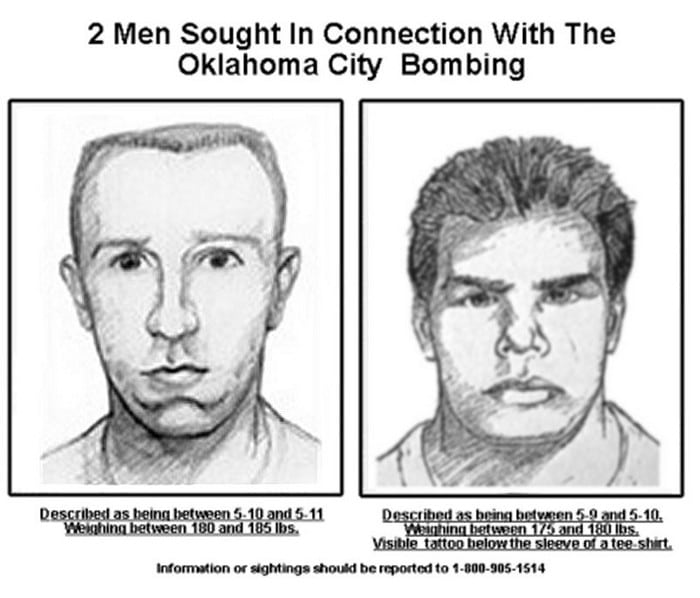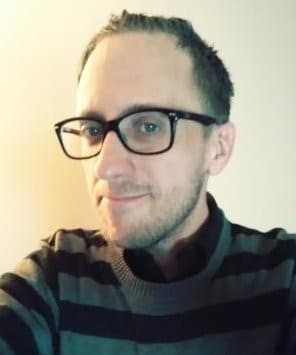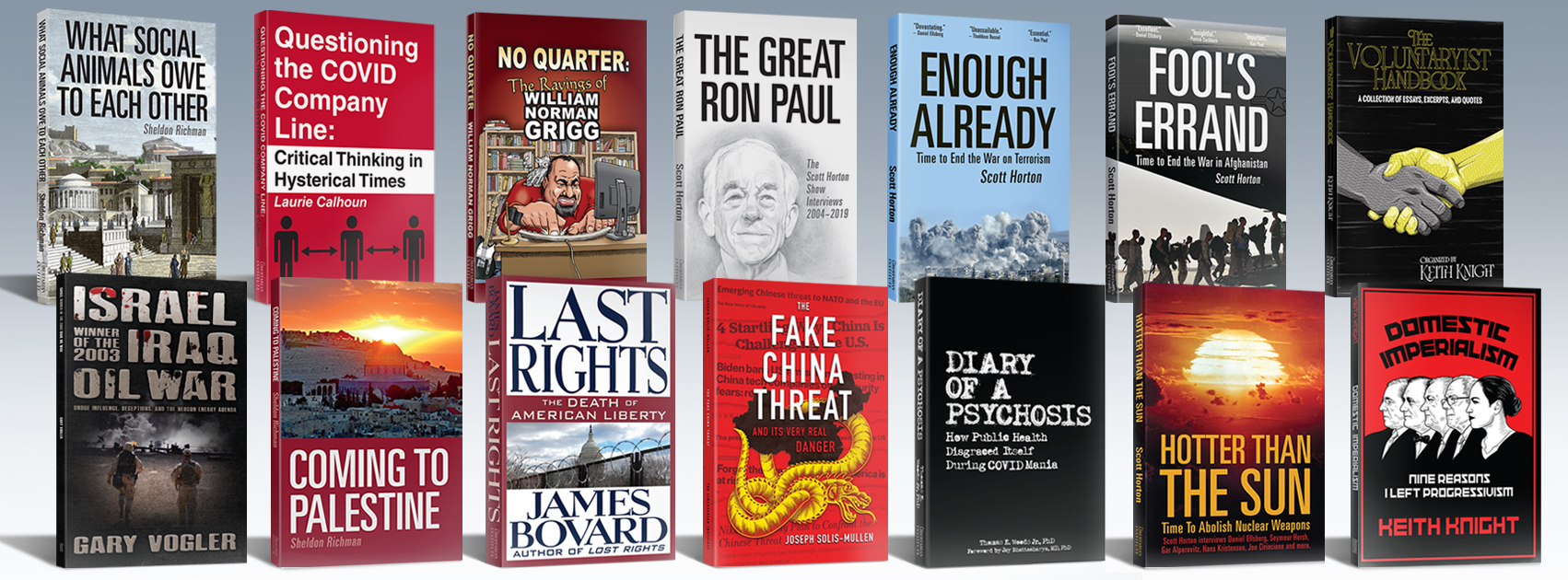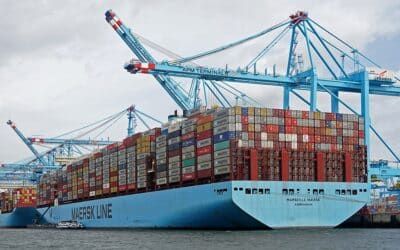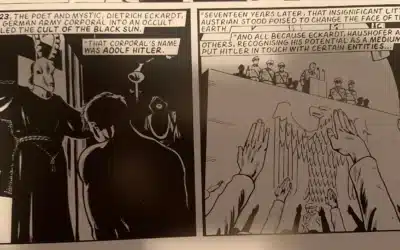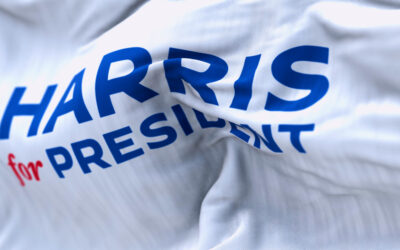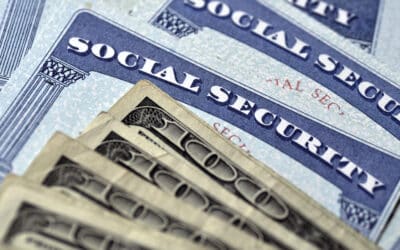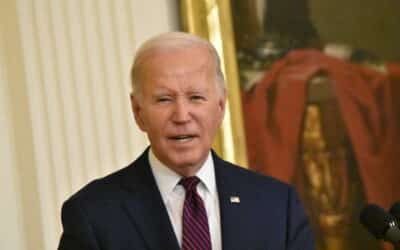“How do 5 or 6 people see something and describe generally the same thing if it doesn’t exist?”
— Dan Vogel, FBI Special Agent, Oklahoma City Field Office
“If only one person had seen that, or two or three…but twenty-four? Twenty-four people say, yes I saw him [McVeigh] with somebody else? That’s pretty powerful.”
— Danny Coulson, former Deputy Assistant Director FBI, founder of FBI Hostage Rescue Team and Special Agent-in-Charge of the Dallas FBI Field Office in April 1995.
“My conclusion, after having interviewed these witnesses is that they did indeed see [John Doe #2]. And that in each of these sightings, he was with a man that they were clearly able to identify as Tim McVeigh”
— Jean Boylan, FBI Task Force Sketch Artist
By most contemporary accounts, the April 19th, 1995, Oklahoma City bombing was carried out by two disgruntled far-right extremists: Timothy McVeigh and Terry Nichols. McVeigh was taken into custody by the FBI within days of the deadly attack, which killed 168 people and injured many more. Terry Nichols turned himself in to the police in Herington, Kansas, after hearing his name on the radio.
Terry Nichols’ brother, James Nichols, was briefly considered a suspect, and McVeigh army buddy Michael Fortier was an accomplice who later served as the prosecution’s star witness. The criminal conspiracy that resulted in the bombing of the Murrah federal building has largely been limited to the people named herein. However, at the time of the bombing, several additional suspects were sought by the FBI. Hundreds of press accounts document the FBI’s unsuccessful pursuit to identify, locate, and arrest the other suspects.
Perhaps the most well-known other suspect is a man dubbed “John Doe #2” by the FBI. Details about this suspect and the nationwide manhunt for him were plentiful in press reports after the bombing. Although only a small amount of information on this suspect emerged at the McVeigh and Nichols trials, there is a great deal more evidence about the suspect among the FBI 302 reports, teletypes, and memoranda generated during the FBI investigation.
The details concerning “John Doe #2” first emerged a day after the bombing, memorialized in a press conference where on-scene commander Weldon Kennedy distributed sketches. As the days went by, more details about the suspect would emerge in press reports, and Attorney General Janet Reno would announce upon Timothy McVeigh’s arrest that “John Doe #2” was still “at-large” and “considered armed, and extremely dangerous.”
Long after the McVeigh and Nichols trials, the suspect would remain an elusive figure: he was never captured, and the FBI even declared that the man simply did not exist. Though FBI documents from 2005 show that a decade after claiming the man nonexistent, the FBI was still very much “concerned” about the man’s identity.1FBI memorandum, FBI Denver Squad 12 to Director FBI, June 24, 2005. Obtained via FOIA by attorney Jesse Trentadue. The name of the agent who wrote the memo is redacted. Page 11 the agent writes that “DTOU expressed concern regarding John Doe #2’s name surfacing” — DTOU is the FBI’s Domestic Terrorism Operations Unit. Another document obtained via FOIA is an email from an FBI official that says “we share CTD’s concern regarding the John Doe #2 information.” The email sender’s name is redacted and the email is dated May 27, 2005. Both the memo and the email were generated at a time when Terry Nichols was being interviewed by Denver FBI agents in preparation for an upcoming interview with Congressman Dana Rohrabacher. Convicted bomber Terry Nichols expressed fear for his family’s life when he told the FBI in 2005 that he knew the man’s identity but would not reveal it out of fear for his family’s safety.2Ibid., 11. The June 24, 2005 memo says “Nichols declined to identify John Doe #2. Nichols advised John Doe #2’s name had not been mentioned during the investigation and, as a result, he feared for his and his family’s well being should it become public.” Who is this suspect? A man who has aroused fear and concern on the parts of the FBI and bomber Terry Nichols, his identity remains shrouded in mystery even 25 years later.
Mainstream media accounts relating to the bombing issued today make no mention of “John Doe #2,” or if they do, it is almost always erroneously reported that the man does not exist. However, this is incorrect, and the assertion is primarily based on a “mistaken identity” theory put forward by the FBI to “do away with” the suspect in the summer of 1995.3David Jackson and Lee Hancock, “Investigators Identify, Clear John Doe №2,” Dallas Morning News, June 15, 1995. Notes: this report is a good example of the FBI’s “misidentification” theory which would be used to explain away John Doe 2 in the days after June 15, 1995. The account says that “Oklahoma City bombing investigators now believe an innocent bystander at a truck rental agency is the so-called John Doe №2.” The report inaccurately says that “Todd Bunting, a soldier from Fort Riley, Kan. — resembles the sketch” — newspapers published Bunting’s photo with the story and there is no resemblance to the sketch. Confusing matters, this report quotes an official who said “We’re still looking for a second man.” Later reports will claim outright that Bunting was John Doe 2 and that all of the witnesses had at once been extremely accurate in their recollections of John Doe 1 (sketch looks identical to McVeigh), but fully inaccurate and wrong concerning John Doe 2. To understand the John Doe #2 story and subsequent “mistaken identity” explanation, we must examine the suspect’s origin and then scrutinize the circumstances by which he was declared a suspect.
John Doe #1 and John Doe #2 were labels used to describe the two unknown suspects in the Oklahoma City bombing, with sketches of both suspects distributed to media the day after the attack. The sketches of the suspects were produced as a direct result of simple police work. Oklahoma County Sheriff Sgt. Melvin Sumter recorded the crime scene when he came upon the remains of the Ryder truck’s rear axle.4Andrew Gumbel and Roger Charles, Oklahoma City: What the Investigation Missed — and Why It Still Matters (New York: HarperCollins, 2012), 83; Melvin Sumter VHS recording 4/19/95 provided to author. The truck’s VIN is visible on tape, with Sumter zooming-in and lingering on the VIN before he brought the axle to the attention of Jim Norman, an FBI agent at the crime scene. The FBI used the VIN, or vehicle identification number, to trace the Ryder truck to a rental agency. The truck was rented from Elliott’s Body Shop, located in Junction City, Kansas, where the FBI learned that two men picked up the truck on Monday, April 17th, 1995.
FBI agents descended upon the rental agency and interviewed employees and witnesses from the shop into the morning hours of April 20th. The employees/witnesses at the shop on April 17th include mechanic Fernando Ramos, receptionist Vicki Beemer, owner Eldon Elliott, and mechanic Tom Kessinger.5Ibid., 105–106. Ramos told the FBI that the two men had arrived at the body shop in a Jeep Grand Cherokee.6FBI Insert 174A-OC-56120 SubE-1507, April 23, 1995. SA Ronald Koziol, SA Jose Jiminez and Sgt. Robert Story (JCPD) Shop owner Eldon Elliott went over the paperwork with the two suspects and performed the vehicle inspection.7Jo Thomas, “Truck Was Rented by Oklahoma Bomb Suspect, Witnesses Say,” The New York Times, February 19, 1997. Elliott is certain that there were two men. He testified that “another person was standing there. I glanced at him. I walked between the two of them,” adding that the second man was wearing a “white hat with blue lightning bolts on the side.”8Ibid. Vickie Beemer and Tom Kessinger sat in the office, observing both suspects for about ten minutes when they were in the shop. Beemer said that John Doe #2 crossed behind John Doe #1 to retrieve an ashtray, suggesting he was a smoker.9Andrew Gumbel and Roger Charles, Oklahoma City: What the Investigation Missed — and Why It Still Matters (New York: HarperCollins, 2012), 105. Two witnesses, Rosemary Zinn and Danny Wilkerson will recount how McVeigh purchased cigarettes from them, though McVeigh wasn’t a smoker.10U.S. District Court, Colorado. U.S. v. Terry Lynn Nichols, Criminal Action №96-CR-68, December 3, 1997, testimony of Rosemary Zinn; Jo Thomas, “Bomb Trial Focus on John Doe №2,” The New York Times, December 10, 1997; Andrew Gumbel, “McVeigh Did Not Act Alone in Oklahoma Bombing,” The Independent, May 12, 2001. It appears that John Doe #2 was a smoker: this is a seemingly minor detail, yet it’s one that strongly suggests the man was with McVeigh on April 17th and April 19th when numerous witnesses spotted him and incidentally, both days that McVeigh bought cigarettes.
The truck was rented from Elliott’s under a false name: Bob Kling. Therefore, no immediate identification could be made based on the paperwork. The FBI had a sketch artist, Ray Rozycki, produce two sketches based on what the witnesses had seen that Monday. The FBI produced sketches of the two suspects on Tuesday, April 20th, 1995, during a press conference that aired on C-SPAN and all major news networks.
Before getting into the details of what the witnesses in Kansas and Oklahoma City saw, we must examine what the FBI later claimed: John Doe #2 did not exist. On June 15th, 1995, the FBI inexplicably declared that John Doe #2 did not exist and was the result of witness misidentification and confabulation. The FBI said that two other men, Army Private Todd Bunting and Sgt. Michael Hertig, who had rented a truck on Tuesday, April 18th, were confused by the witnesses for a single man (McVeigh) who had rented the bomb truck on Monday.
However, the FBI’s misidentification theory has a fatal flaw that renders it impossible. That flaw is that owner Eldon Elliott was not at work on Tuesday, April 18th, when Todd Bunting and Michael Hertig entered the shop.11“Retired Kansan Repeats Story of Second Man,” Daily Oklahoman, April 6, 2004; “Nichols’ Lawyers Hint at a Wider Conspiracy,” Associated Press, April 6, 2004. Therefore, Elliott has no memory of the other two men. If he has no memory of the other two men, he cannot confuse them with anyone. Additionally, all of the witnesses’ recollections were stunningly accurate: the man they described, represented in the John Doe #1 sketch, is a dead ringer for McVeigh. Meanwhile, the John Doe #2 sketch looks absolutely nothing like Todd Bunting, the Army private the witnesses supposedly remembered when they provided their descriptions.
Why, exactly, the FBI created this bogus story to try to “explain away” John Doe #2 is not fully understood or is perhaps the subject for another essay. At any rate, based on Eldon Elliott’s testimony, we can be certain that two men picked up the bomb truck. Elliott was so sure of this fact that he testified under oath at the 2004 Nichols state trial that the FBI had tried to persuade him and convince him that he was incorrect. However, Elliott noted that he couldn’t have been confused because he never did see the other two men who had rented a truck on the 18th, and besides, he clearly remembers two suspects.12Ibid.
With the FBI’s bogus misidentification theory out of the way, we will move on to what the witnesses said they saw regarding these two suspects. As the reader will see, there were far more witnesses to the second suspect — John Doe #2 — than just the Elliott’s Body Shop employees. In fact, every witness in Oklahoma City on April 19th saw McVeigh with another man in the Ryder truck; meanwhile, Terry Nichols was in Kansas. So, who was this other man?
The following is a transcript of SA Weldon Kennedy’s comments from the Thursday, April 20th, 1995 morning press conference. The description of the suspects provided by SA Kennedy is based on interviews with Elliott’s Body Shop employees Eldon Elliott, Vickie Beemer, and Tom Kessinger.
“Investigators have identified a vehicle that was used in connection with yesterday’s attack on the Federal Building here in Oklahoma City. Further investigation has determined that two white males were associated with this vehicle. As a result, arrest warrants will be sought for these two males. I must point out that that their exact identities are not presently known. Thus the arrest warrants that I am discussing will be for two men, each identified only as ‘John Doe.’
The first man is of medium build, he is further described as approximately 5’10 to 5’11, weighing approximately 180 to 185 pounds with a light brown crew-cut, and he is right handed.
The second man is also of medium build. He is further described as 5 feet 9 inches to 5 feet 10 inches tall, weighing approximately 175 to 180 pounds, with brown hair and a tattoo visible on his left arm, below his t-shirt sleeve. He is possibly a smoker.
Composite sketches of these two men have been prepared; copies are on the way for everyone. Both of these men should be described as armed and extremely dangerous. Anyone with information about these men should provide it immediately to the nearest FBI office.”13FBI U.S. Department of Justice, Statement by FBI Special Agent In Charge Weldon L. Kennedy, April 20, 1995. Note: this press release contains a transcript of Kennedy’s remarks during the corresponding press conference the morning of April 20.
Within days, John Doe #1 would be identified as Timothy McVeigh. John Doe #2, however, was never identified.
The description of John Doe #2 given by Weldon Kennedy during the April 20th press conference matches very closely the description(s) given by other eyewitnesses who observed this man in the company of Timothy McVeigh in the days and even weeks leading up to the April 19th, 1995, bombing.
In the form of a chronology, an outline of some key witness accounts follows:
April 15th, 1995 (Saturday) | Herington, Kansas
Santa Fe Trail Diner | U.S. Highway 56
Approximately 7:15–7:30 AM
Barbara Whittenberg and her husband Robert were the proprietors of the Santa Fe Trail Diner and Santa Fe Motel in Herington, Kansas. The diner was situated right off Highway 56, near Junction City, Kansas. Whittenberg worked at the diner where she was in charge of the kitchen and the dining area.
On Saturday, April 15th, Whittenberg opened the diner around 7:00 AM. It was a typical Saturday save for the fact that her opening waitress had called to say she would be late to work. The absence of her opening waitress left Whittenberg alone to handle seating, serving, and cooking until fully staffed.
Within about fifteen minutes of opening, Timothy McVeigh, Terry Nichols, and John Doe #2 came into the restaurant for coffee. There was a light-colored sedan with an Arizona license plate and a Ryder truck in the parking lot when the group arrived. Whittenberg’s son said that the vehicle with the Arizona plate was a Thunderbird.14U.S. District Court, Oklahoma County. Grand Jury No. CJ-95–7278, September 15, 1997, testimony of Barbara Whittenberg. Notes: Whittenberg details same story that has been covered in numerous media accounts. Has additional details re: death threats, pinpoints actual date of sighting 4/15 contrary to NY Times account. Says vehicle in lot was a Thunderbird w/ Arizona plates.
When serving the group coffee, Whittenberg engaged the group in small talk. Noting the Ryder truck in the parking lot, Whittenberg asked if someone was moving and where to. John Doe #2 spoke up, saying, “Oklahoma.”15Ibid. Whittenberg replied that she had relatives in a town south of Oklahoma City. According to Whittenberg, the remark immediately stopped the conversation dead in its tracks — “McVeigh looked at him, and you could feel buckets of ice being poured over our conversation. I got out of it.”16MGA Films, “Terror From Within: The Untold Story of the Oklahoma City Bombing.” 2002. Video, 1:04:25; Notes: Whittenberg’s account is given in this documentary; the quote comes from the video. The video pins the date as April 15th, the same given in Whittenberg’s Grand Jury testimony.
Whittenberg remembers the encounter vividly not only because she had opened the cafe short-staffed that morning, but also because she recognized Nichols and McVeigh as occasional customers. However, the third man with the group, Whittenberg testified, she did not recognize. She would later tell investigators and testify to a grand jury that this man had olive skin and looked possibly Hawaiian. Whittenberg testified that the man with McVeigh and Nichols had a “thick neck” and looked “like a bodybuilder.” These details are notable in that nearly a dozen witnesses have used identical language to describe this individual. For example, witnesses Bill Maloney and Joe Davidson described the man they saw in November 1994, with McVeigh and Nichols, as “like a bodybuilder” and said that he had a “thick neck.” Post office employee Debbie Nakanashi testified that the man she saw with McVeigh was muscular, “like a bodybuilder.” Maloney, Nakanashi, and Whittenberg all noted the man’s muscular build and used almost identical language to describe him. When shown the FBI sketch of the man encountered by Bill Maloney and Joe Davidson, Whittenberg told a CNN reporter, “This is the closest picture I’ve seen yet.”17“FBI Seeks Man With McVeigh,” Spokane Spokesman-Review, March 10, 1997. Did Bill Maloney, Joe Davidson, Debbie Nakanashi, and Barbara Whittenberg all see the same individual?
Whittenberg’s account was reported on in major newspapers, wire service reports, and magazines, and she would recount what she had seen in at least one documentary film. Whittenberg’s account appeared in the New York Times in the fall of 1995, the Washington Post in April of 1996, in a May 1996 issue of The New American magazine, the June 4th edition of McCurtain Gazette, and the June 23rd, 1996 edition of the Kansas City Star.18Jo Thomas, “Sightings of John Doe №2: In Blast Case, Mystery №1,” The New York Times, December 3, 1995; Lois Romano, “A Year After Oklahoma City Bombing, Many Mysteries Remain,” The Washington Post, April 19, 1996; J.D. Cash, and Jeff Holladay, “2 Ryder Trucks Were Used in Oklahoma City Bombing,” McCurtain Daily Gazette [Idabel, OK], June 4, 1996; Judy Thomas, “The Picture of Hope and Persistence: Grandparents of Bombing Victims Seek John Doe 2,” Kansas City Star, June 23, 1996. The Associated Press would issue a syndicated report throughout all national newspapers on March 9th, 1997, and the same month Whittenberg’s account would feature prominently in a TIME magazine article.19“Report: FBI Looking For Man Seen With Bombing Suspects,” Associated Press, March 9, 1997; “Who Is Robert Jacques?,” TIME Magazine, March 17, 1997.
Whittenberg’s media exposure was at an apex in 1997. That is when the death threats started. She received a threatening letter, which she turned over to the FBI.20U.S. District Court, Oklahoma County. Grand Jury No. CJ-95–7278, September 15, 1997, testimony of Barbara Whittenberg. Notes: Whittenberg describes a threatening letter that was hand delivered to her mailbox (not sent through the post office) and how she subsequently moved and got a P.O. Box. Whittenberg would later testify in 1997 before the grand jury impaneled to investigate the bombing that she began receiving death threats telling her to keep her mouth shut. She told a Daily Oklahoman newspaper reporter about these threats, saying that “I’ve started to regret I ever said a thing,” adding, “I don’t do telephone interviews anymore. I used to not be that way. I’m sorry.”21“Some Witnesses Leery of Bombing Grand Jury,” Daily Oklahoman, August 10, 1997. Alludes to the death threats Whittenberg has received, quoted.
The Ryder truck that Whittenberg saw in the parking lot caused considerable confusion for both newspapers and the FBI: many papers (including the New York Times) inaccurately reported the date of Whittenberg’s encounter as April 18th, the day after the bomb truck was rented. The FBI discounted Whittenberg because she had seen the Ryder truck, thinking she must be mistaken or lying. After all, McVeigh did not rent the large 20-foot bomb truck until April 17th. However, Whittenberg’s account matches up with that of other witnesses in Kansas. Nearly a dozen witnesses saw McVeigh with a Ryder truck between April 11th and April 16th, for an entire week before renting the more massive truck from Elliott’s. Witnesses from the Dreamland Motel all told the FBI that they distinctly remember McVeigh parking a Ryder truck in the lot on Easter Sunday: April 16th.22U.S. District Court, Colorado. U.S. v. Terry Lynn Nichols. Criminal Action №96-CR-68, December 2, 1997, testimony of Lea McGown; U.S. District Court, Colorado. U.S. v. Timothy James McVeigh. Criminal Action №96-CR-68, May 8, 1997, testimony of Eric McGown; U.S. District Court, Colorado. U.S. v. Timothy James McVeigh. Criminal Action №96-CR-68, May 22, 1997, testimony of Herta King; SA Mark Bouton, FBI 302 interview w/ Eric McGown, April 24, 1995, file #174A-OC-56120 D-2609; Lois Romano, “A Year After Oklahoma City Bombing, Many Mysteries Remain,” The Washington Post, April 19, 1996; Maurice Possley, “Teen Eyewitness Links McVeigh to Ryder Truck,” The Chicago Tribune, May 9, 1997; Steven Wilmsen, “One Oops for the Prosecution,” Denver Post, May 11, 1997; Howard Pankratz,“The Defense Has A Plan,” Denver Post, May 22, 1997; Notes: Half a dozen witnesses at the Dreamland Motel vividly recount McVeigh parking a Ryder truck at the motel on Easter. Easter witnesses include motel manager Lea McGown, her son Eric (who saw it after Easter brunch, and later while cleaning the pool), David and Herta King, Connie and Donald Hood, and Renda Truong. David King noted specific details about both trucks, saying the first truck was “older” and “faded yellow” while the new truck spotted after April 17 was “newer, more aerodynamic looking” and much larger. Speculation is the smaller truck was found to be not large enough to house the 7,000 pound bomb. These witnesses universally described the first truck as smaller and having a washed-out “faded” look. Some of these witnesses said that the truck did not have the “Ryder” logo on it. This smaller moving truck was spotted parked at Geary Lake by at least three witnesses on four consecutive days: April 11th through 14th.23U.S. District Court, Oklahoma County. Grand Jury No. CJ-95–7278, September 15 1997, testimony of James Sargent; U.S. District Court, Colorado. U.S. v. Terry Lynn Nichols, Criminal Action №96-CR-68, December 4, 1997, testimony of James Sargent; Steve Wilmsen, “One Oops For Prosecution,” Denver Post, May 11, 1997; Howard Pankratz, “The Defense Has a Plan,” Denver Post, May 22, 1997; J.D. Cash, and Jeff Holladay, “2 Ryder Trucks Were Used in Oklahoma City Bombing,” McCurtain Daily Gazette [Idabel, OK], June 4, 1996; U.S. District Court, Oklahoma County. Grand Jury No. CJ-95–7278, September 15, 1997, testimony of Georgia Rucker; U.S. District Court, Colorado. U.S. v. Terry Lynn Nichols. Criminal Action №96-CR-68, December 4, 1997, testimony of Georgia Rucker; Sandy Shore, “Nichols’ Witnesses Dispute Timeline on Building of Bomb,” Associated Press, December 5, 1997; Jo Thomas, “Bomb Lawyer Seeks to Show Big Conspiracy,” The New York Times, December 5, 1997; Andrew Gumbel and Roger Charles, Oklahoma City: What the Investigation Missed — and Why It Still Matters (New York: HarperCollins, 2012) pp. 200–201. Following that, the truck was parked at the Dreamland Motel. At some point following Easter Sunday, this truck disappeared. It is assumed that the bombing conspirators either got rid of that truck because it was too small to house the 7,000-pound bomb or used for some other unspecified purpose.
In her grand jury testimony, Whittenberg expressed some level of frustration that she was not taken more seriously by the FBI. She said that the FBI told her they were not interested in her account because she saw the Ryder truck and McVeigh had not rented a truck until the 17th. Whittenberg said that she did not care one way or another, because she knew what she had seen, and she knew she was telling the truth.
April 18th, 1995 (Tuesday) | Oklahoma City
Center City Post Office | 5th Street
~9:00–10:00 AM
Debbie Nakanashi, Raymond Michael Klish, and Karen Reece were employees at the Post Office across the street from the Murrah Building. According to these witnesses’ interviews, on the morning of the 18th, Timothy McVeigh and John Doe # 2 visited the Post Office. The two men spoke briefly with Debbie Nakanashi, asking her where they might get federal job applications. McVeigh did not speak during the encounter, with John Doe #2 doing all of the talking.24U.S. District Court, Oklahoma County, Grand Jury No. CJ-95–7278, September 9, 1997, testimony of Deborah Inez Nakanashi; Brian Ford, “Grand Jury Listens to Witnesses,” Tulsa World, July 20, 1997.
Regarding John Doe #2, Nakanashi told ABC News that “he walked with a military bearing. He had dark skin, olive skin. It was obvious to me this other man was the one that was in control of the situation; he was the boss.”25Erin Hayes, “Were There Others? Witnesses Claim McVeigh Had an Accomplice, FBI Denies.” ABC News, May 30, 2001. In an interview with investigators, Klish stated that John Doe #2 — the man who did the talking — was “about 5’10” with dark hair that was combed straight back, stocky build, approximately 200 pounds.”26Marty Reed and Wilma Sparks. Private investigators’ interview of Mike Raymond Klish, June 18, 1996. Klish estimated the man was probably late 30s. The other man, Klish said, never spoke a word and was 6′, slim, with a military-type haircut.
Nakanashi was interviewed by SA Daniel Risner and SA Michael Behrends of the FBI on April 22nd, 1995, when her memory was fresh. She was also interviewed by the Oklahoma State Bureau of Investigation and then frequently by the FBI in the months following the bombing, meeting multiple times and providing a description of the man she saw to an FBI sketch artist. Nakanashi says of her interviews, “I met always with two men, always a different set of men, four, five, six times. I picked McVeigh out of a photo lineup, but I did admit I had seen him on television. Then they asked about John Doe #2, the guy I spoke with. I told them the guy they had a composite sketch of was not my guy at all.”27“Some Witnesses Leery of Bombing Grand Jury,” Daily Oklahoman, August 10, 1997. Nakanashi said that the extant sketch of John Doe #2 was not quite the man she saw — he looked different than the drawing. FBI sketch artist Jean Boylan interviewed Debbie Nakanashi for six hours to put together a sketch of the man she, Klish, and Reece had seen. Boylan said that “Debbie was such a good witness. I really believed her.”28Sandy M. Fernandez. “Drawn to Trouble.” Elle Magazine, Dec. 2001. pp. 126–133. Boylan then worked with Elliott’s Body shop employee Tom Kessinger to put together a more accurate sketch of the man he’d seen with John Doe #1 at Elliott’s Body Shop. That sketch — a side profile of John Doe #2 with a hat on — was released to the media and depicted almost precisely the man Nakanashi described to Boylan. When FBI official Weldon Kennedy held a press conference clutching the sketch, Nakanashi recognized the rendering instantly: “My John Doe №2 was the second sketch with the side view with the high cheekbones — that is my guy, the guy I saw.”29“Some Witnesses Leery of Bombing Grand Jury,” Daily Oklahoman, August 10, 1997.
Nakanashi appeared on “Good Morning America” in 2001. On the segment, Jean Boylan’s John Doe 2 profile sketch was shown. Nakanashi commented, “There’s a guy out there that looks exactly like that [JD2 sketch] that helped blow up the Murrah Building, and nobody’s looking for him, and nobody seems to care if he gets found and is prosecuted or not. And that really bothers me.”30“Catch All Terrorists,” WND, June 11, 2001; Good Morning America, June 2001.
April 18th, 1995 (Tuesday) | Oklahoma City
Alfred P. Murrah Federal Building
Approximately 4:45 PM
Guy Rubsamen, a security guard, working outside the Social Security office at the Murrah Federal Building, saw something highly unusual the afternoon before the bombing. In retrospect, it appears to have been a “dry-run” of the bombing carried out by the bombing conspirators.
Rubsamen reported that on the afternoon before the bombing, around 4:45 PM, he observed three individuals pull up in a yellow Ryder truck. They parked the truck “dead center” in front of the Murrah Building, shut off the engine, and then exited the vehicle in a hurry. Rubsamen described the encounter to McCurtain Gazette reporter J.D. Cash and Rocky Mountain News reporter Kevin Flynn: “There was either two or three men, one jumped out the driver’s side, and one or two out the passenger side. The first thing that struck me was how quickly they jumped out. Those guys were in a hurry.”31SA Thomas Wall, FBI 302 interview w/ Guy Gerald Rubsamen, May 22, 1995, file #174A-OC-56120 D-5389; SA Lee A. Zechter, FBI 302 interview w/ Guy Gerald Rubsamen, August 25, 1995, file #174A-OC-56120 D-9804; J.D. Cash and Jeff Holladay, “Did Conspirators Try ‘Dry Run’ on Eve of OKC Bombing?” McCurtain Gazette [Idabel, OK], Sept. 1, 1996; Kevin Flynn, “Guard Saw 2nd Truck At Building, Story Mirrors Bombing Trial Witness’ Account of Blast Day,” Rocky Mountain News [Denver, CO], May 24, 1997.
After about fifteen minutes had passed and no one had entered the building with a delivery, Rubsamen went back out front to check and saw that the Ryder truck was gone. Rubsamen recalled after the bombing that the yellow moving truck appeared like a Ryder rental truck because it was yellow. However, the Ryder logo was weathered and faded or painted over. Was this truck, with its faded Ryder logo, the second Ryder truck that other witnesses observed April 10th through 16th? It sure sounds like it, described by Rubsamen in the same terms as the truck spotted at Geary Lake and the Dreamland Motel.
Did Guy Rubsamen observe a dry-run for the bombing? Who were the three men he saw?
April 19th, 1995 (Wednesday) | Kingman, Kansas
Save-A-Trip
Approximately 1:30–2:30 AM
Richard Sinnett was assistant manager at a Save-A-Trip convenience store in Kingman, Kansas, on the day of the bombing and would have an encounter in the early morning hours of April 19th that serves as one of the most compelling accounts that others were involved in the bombing that day.
A little after midnight, between 1:30 and 2:30 AM, on April 19th, 1995, Sinnett observed a three-car convoy of a Ryder truck, four-door sedan, and brown truck in the parking lot of the Save-A-Trip.32U.S. District Court, Oklahoma County, Grand Jury No. CJ-95–7278, September 11, 1997, testimony of Richard Sinnett; Richard Sinnett interview w/ J.D. Cash for MGA films, March 11, 1999; Paul Queary, “Kansan Says He Saw Them, Ryder Truck,” Topeka Capital-Journal, September 12, 1997; Brian Ford, “McVeigh Placed at Kansas Store,” Tulsa World, September 12, 1997; “Witness Tells of Seeing McVeigh In Truck,” Rocky Mountain News, September 12, 1997; “Mystery of John Doe №2 Pervades Conspiracy Investigation,” Dallas Morning News, September 14, 1997; The Oklahoma Bombing Investigation Committee, Final Report on the Bombing of the Alfred P. Murrah Building April 19, 1995, (The Oklahoma Bombing Investigation Committee, 2001), 161–162. Sinnett’s encounter began when a man started pumping gas into the Ryder truck, causing the fuel-control console behind the counter in the store to emit a tone indicating a customer has engaged the gas pump.
When Sinnett looked up and out into the lot, he saw a man with his back to him pumping gas into the Ryder truck and, at that time, observed that the Ryder truck was pulling a trailer with a huge fuel tank mounted on it. Sinnett paid close attention to the Ryder truck because the trailer attached to it had a very large cylindrical or barrel-shaped fuel tank mounted on it that looked, unlike anything he had ever seen before. Sinnett said that the tank mounted on the trailer had to have been about 6 feet wide and was so large it would have “barely fit into the back of the Ryder truck so it would have easily held over a thousand gallons of liquid.” Sinnett said he could see a clear colored liquid sloshing around in the large fuel tank as the convoy left the parking lot.
Sinnett would recount this encounter in great detail to the OKC grand jury investigating the bombing. He would testify that a man he referred to as John Doe #2 pumped gas into the Ryder truck while the truck driver entered the Save-A-Trip and asked where the restroom was.
Sinnett directed the Ryder truck’s driver to the rear of the store and would describe him as being about 6 feet tall with light-colored hair and a military-looking haircut. While the driver was using the restroom, John Doe #2 finished pumping gas and entered the store where he picked out a sandwich from the deli counter. Sinnett heated the sandwich for John Doe #2 in the microwave, and just as the sandwich had finished being heated, the Ryder truck’s driver came out of the restroom and approached the counter. John Doe #2 then paid for the sandwich, and the man who had used the restroom paid for the gas.33Ibid.
Sinnett said that the man who pumped the gas and picked out a sandwich, paying in cash, had features that matched some details of the sketches and descriptions of John Doe #2 later provided by others. The man was about 5’7 or 5’8, muscular “like a football player,” about 180 lbs, with dark hair parted on one side and brushed back.34Ibid. After the sketch of John Doe #2 was aired in the media on April 20th, Sinnett says he recognized it immediately as depicting the man he had seen that night. He told the Associated Press that “the eyes were perfect. I recognized him right away.”35“Witness Tells of Seeing McVeigh In Truck,” Rocky Mountain News, September 12, 1997.
After both men exited the Save-A-Trip together, Sinnett watched as the two spoke animatedly to one another just outside the door before getting into the Ryder truck. Sinnett was left with the impression that the two were arguing with one another, testifying that the taller of the two men was waving his arms around and “kind of getting in the face of” the man he referred to as John Doe #2. Following this, the pair got into the Ryder truck with John Doe #2 entering via the passenger side. As the Ryder truck began to exit the parking lot, Sinnett observed a four-door sedan and brown pickup truck pull up alongside, and behind, the Ryder truck and watched as all three vehicles pulled out onto highway 54 together.
The convoy took Sinnett by surprise — he was unaware that the brown pickup and four-door sedan had been in the lot until that moment. Sinnett testified that “the car and the truck [pulling up alongside the Ryder] was just almost immediate, one after the other, and that caught me by surprise because I didn’t even know they were back behind the building.”36Transcript of Richard Sinnett interview w/ J.D. Cash for MGA films, March 11, 1999. Sinnett did not get a good look inside the sedan or brown truck and could not account for how many people might have been in either vehicle.
The Save-A-Trip in Kingman, Kansas, is located just 35 miles west of Wichita, about a half hour’s drive on the highway. It’s 175 miles north of Oklahoma City, about three hours away. This puts the convenience store at a location where the convoy could reach Oklahoma City between 4 and 6 AM, depending on how fast the convoy was traveling and how many stops they would make. Sinnett would relate that “they had plenty of time to get down there” in an interview with the Daily Oklahoman.
April 19th, 1995 (Wednesday) | Oklahoma City
YMCA Building | 125 NW 5th Street
8:02 AM
Morris John Kuper, an employee of the nearby Kerr-McGee Oil Company, saw Timothy McVeigh and John Doe #2 walking away from the 5th street YMCA building on the morning of the bombing. Kuper observed both men running towards and getting into a yellow Mercury Marquis parked in the Kerr-McGee company’s parking lot. Kuper recalls the time because he was late for work and looked at his watch right after seeing the two men, at 8:02 AM.37SA James A. Beck, FBI 302 interview w/ Morris John Kuper, October 24, 1995, file #174A-OC-56120 D-10935; SA James A. Beck, FBI 302 interview w/ Morris John Kuper, November 1, 1995, file #174A-OC-56120 D-11356; Jo Thomas, “Bomb Trial Focus on John Doe №2,” The New York Times, December 10, 1997; David Neiwert, “The Mystery of John Doe №2.” Salon.com, June 9, 2001. This was almost exactly one hour before the bombing.
Kuper called the FBI on April 21st to report what he had seen. He also suggested that FBI agents check the nearby security cameras at the Public Library and Southwestern Bell buildings, which they did. The FBI seized the surveillance camera footage from the SWB building and all other surveillance camera footage in the area.
When Kuper testified at the Nichols trial, prosecutors tried to challenge Kuper’s credibility, telling the jurors that he never contacted the FBI.38U.S. District Court, Colorado. U.S. v. Terry Lynn Nichols. Criminal Action №96-CR-68, December 5, 1997, testimony of Morris Kuper. However, in 2001, the FBI released thousands of documents found to have been withheld from the Defense team. Among those documents was an FBI lead sheet showing that Morris Kuper had, indeed, contacted the FBI just two days after the bombing, relating to them what he saw that morning: Timothy McVeigh and John Doe #2.39Jo Thomas, “Document Erases Doubts About a McVeigh Witness,” The New York Times, May 27, 2001
April 19th, 1995 (Wednesday) | Oklahoma City
Intersection of Main and Robinson St.
8:30 AM
At the time of the bombing, Kyle Hunt was a Vice President at Bank of Oklahoma, responsible for credit & collections and managing the bank’s sale of real estate properties. Hunt and his wife were both respected members of the community and active in 4-H activities. With these facts in mind, one must consider Hunt’s account to be credible and worthy of careful consideration.
On the morning of the bombing, Hunt was on his way to the BOK building on Kerr Ave to meet with his attorney, a meeting scheduled for 8:30 AM. He was running late, and Hunt said he had just exited Interstate 40 into downtown Oklahoma City when he had an unusual encounter that would remain etched into his memory forever. As Hunt was driving through downtown, about four blocks from the Murrah Building, he encountered Timothy McVeigh and three other individuals.40SA David Argo & SA D.J. Dunlap, FBI 302 interview w/ Kyle Hunt, April 27, 1995, File #174A-OC-56120 D-452; U.S. District Court, Oklahoma County, Grand Jury No. CJ-95–7278, July 14, 1997, testimony of Kyle Hunt; Paul Queary, “Banker Testifies Before Grand Jury Probe of Conspiracy Allegations,” The Topeka Capital-Journal, July 15, 1997.
Hunt reported that as he was driving east on Main St. he approached a stoplight where already stopped ahead in the lane adjacent to his, there was a Ryder truck followed close behind by a four-door sedan driven by Timothy McVeigh. Hunt said that it was 8:30 AM when this encounter happened, as he’d been checking his watch because he was late for his scheduled meeting.
As Hunt pulled ahead, slowly passed the sedan, and came to a stop at the light next to the Ryder truck, he got a good look at the sedan’s driver. Hunt reported that the sedan was driven by a man with angular features and a short military-style haircut and that there were two other men inside, one in the passenger seat and one in the back seat.41Ibid. One of the men in the sedan had long dark hair.
Hunt would recall the driver’s face vividly because the two made eye contact as Hunt passed the Mercury. Hunt said, “as I pulled closer, the driver of the sedan [McVeigh] warned me off. I got an icy-cold, go-to-hell look from the young man that I now know to be Timothy McVeigh.”42J.D. Cash and Jeff Holladay, “Startling New Evidence: At Least 4 People Directly Involved in Bombing,” McCurtain Gazette, January 23, 1996. Hunt is positive; the driver was McVeigh, later saying “it was unnerving” and the look that the driver gave him “fixed the features of his face in my mind.”
Hunt saw McVeigh on television just two days later when McVeigh was marched out of the Noble County courthouse in Perry, Oklahoma. Hunt testified that at that time, he immediately recognized McVeigh’s face as the driver who had chillingly glared at him in traffic.
A day or two afterward Hunt was being visited at his home by a police officer friend, and Hunt recounted to him what he’d seen. The friend advised him to contact authorities about the encounter, and the FBI would interview Hunt three times regarding what he saw. Hunt also recounted what he saw to grand jury petitioner Glenn Willburn in a tape-recorded interview. He would also testify before the grand jury was impaneled to investigate the bombing. Hunt’s accounting of this story has never wavered, and to this day, remains compelling and credible.
Who were the other men with Timothy McVeigh? If McVeigh was driving the Mercury, who was driving the Ryder truck? By Hunt’s account, this puts four men in the convoy — incidentally the same number of people observed by Richard Sinnett hours earlier when the convoy had stopped at Sinnett’s Save-A-Trip in Kingman, Kansas.
April 19th, 1995 (Wednesday) | Oklahoma City
5th Street, Eastbound
9:00–9:02 AM
Rodney Johnson was a driver for Rolling Inn Catering in Oklahoma City at the time of the bombing. On the morning of the bombing, Johnson traveled eastbound on 5th Street, making his way to Cox Tomato in the Bricktown area of downtown Oklahoma City. This morning commute took Johnson past the Murrah building, usually between 8 and 9 AM. It has been established that Johnson probably passed the Murrah building around 9:00 AM — his truck had just passed the Murrah Building when it was impacted by debris at 9:02 when the bomb exploded.
Just thirty to sixty seconds before Johnson felt the bomb go off, he observed two men on foot hurrying away from the Murrah building. The pair ran into 5th Street and in front of the catering truck. Johnson had to brake his vehicle and let the men pass in front of him, and in doing so, got a good look at both suspects.43SA John Hippard, FBI 302 interview of Rodney Johnson, Apr 26, 1995, file #174A-OC-56120 D-3253; U.S. Secret Service Timeline, May ’95. pg 73. Johnson contacted the FBI on the night of the bombing about what he had seen and was interviewed by the FBI on April 21st by SA John Hippard.
Johnson described the taller man who ran in front of his catering truck as approximately 6′ to 6’1″, late 20s to early 30s, short sandy blonde hair, crew cut, wearing a white t-shirt. When shown a composite sketch of John Doe #1 by the FBI, Johnson said it highly resembled the man he saw. On April 22nd, when Johnson saw McVeigh’s arrest on television, he called FBI Special Agent John Hippard and told him that McVeigh was the man he saw.44Ibid.
The man Johnson saw with McVeigh the morning of the bombing was described to the FBI as being “stocky, about 5’8”, with black hair, wearing blue jeans and a dark-colored jacket.” Johnson did not get as good a look at the second man as he did McVeigh, who passed closer to Johnson’s truck than the second man who followed. Johnson would later tell reporters about what he saw:
“I saw two individuals, Timothy McVeigh and John Doe #2, cross Fifth Street just minutes before the blast. I remember the Ryder truck, parked against the building. I was making a move from the first lane [of 5th Street] to the next left lane when I noticed two individuals, one of them, Timothy McVeigh, and one of them John Doe #2.”45Rodney Johnson’s comments from a press conference were excerpted in several documentary films. See A Noble Lie (2012), and Terror From Within (2001)
Johnson is adamant that he saw Timothy McVeigh with another man. In television news footage broadcast after the bombing, Johnson said “I know for a fact Timothy McVeigh was with another individual on the morning of April 19th right before the bombing.”[46]
The witness accounts presented here are just a fraction of the many witnesses who observed Timothy McVeigh in Kansas and downtown Oklahoma City. There are many more, and it wasn’t easy to select which accounts I would present here. Ultimately, what the witness statements do is confirm that there was at least one other accomplice with McVeigh. The accounts of the Elliott’s Body Shop employees uniformly describe an accomplice. The corroborating testimony from witnesses Barbara Whittenberg, Debbie Nakanashi, Guy Rubsamen, Richard Sinnett, Morris Kuper, Kyle Hunt, and Rodney Johnson also support this second suspect’s existence. The critical thing to remember about these witness accounts is that they are not outliers or otherwise aberrations. In large part, all of the witness accounts are corroborative; these people all saw just about the same thing.
Consider this: not a single witness who saw Tim McVeigh at the crime scene was called to testify at his trial. Imagine how powerful it would have been for the prosecutors if they could have put someone on the witness stand who would point to Timothy McVeigh and say, “it’s him. I saw him. I’m sure of it.” Why didn’t prosecutors go for the kill? There is a straightforward reason that none of these witnesses ever testified at trial: every single one of them would have also said, “he had another guy with him. Another man was sitting next to him in the truck.” This other man, John Doe #2, could not be easily accounted for by the prosecution. In fact, he wasn’t explained at all.
Later, the FBI’s first on-scene commander of the Oklahoma City bombing investigation wrote a book. In his book, Weldon Kennedy wrote this: “this was going to be a case largely built from forensic evidence since there were no eyewitnesses.” No eyewitnesses. I will leave it up to the reader to determine why Kennedy wrote that in his book, and whether Kennedy was telling the truth when he wrote it.
This article was originally featured at Richard Booth’s website and is republished with permission.

